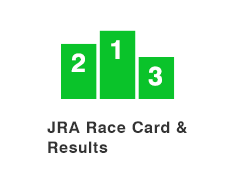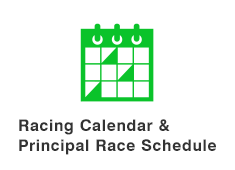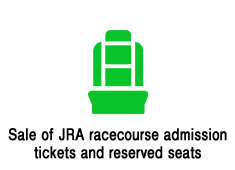As of January 2025
1. Licensing
Visiting Trainers and Jockeys are required to attend a licensing interview with the JRA stewards for the issuance of their license upon his/her arrival. All trainers and jockeys who are granted a license agree to be bound by the JRA Rules of Racing.
2. Starting Gate
(1) Starting gate examination
In JRA races, all runners must pass a starting gate examination before declaration. The starter checks and judges that the horse has performed the sequence of entering, standstill and breaking out at least twice without any problems.
(2) Lead pony, barrier blanket and Assistant starter〔gate crew〕
JRA does not permit the use of lead ponies and barrier blankets. There is also no assistant starters situated inside the starting gate in order to keep the horse in check. However, a groom with the starter's permission may enter the starting gate and calm the runner in front of the door until the other runners have entered the gate.
(3) Entry procedure
Generally, runners enter the gate in the following order:
1) odd-numbered runners
2) even-numbered runners
3) the highest-numbered runner
However, horses with blindfolds or those with bad records at loading may be loaded first no matter whether the draw is odd or even.
Should there be an unruly horse with the highest number, the starter may decide to load the horse with the second highest numbered last. The last runner to enter the gate must be entered by the JRA official.
*The jockey must take off the blindfold immediately once the horse enters the gate.
3. Race Day Schedule (Trainers, Assistant Trainers and Grooms)
(1) Saddling Enclosure
The time schedule differs depending on each race, so please make sure to check the meeting time of the saddling enclosure in advance and take horses to the saddling enclosure by specified time.
(2)Saddle Inspection
The pre-weighed Saddles must be inspected again at saddling enclosure by trainers (or representative) or jockeys after meeting time of the saddling enclosure of the race.
(3)Leading to Starting gate
Generally, runners must be entered gate by JRA official. If you want your runner gated in by your own stable staff, you must inform JRA official in advance and obtain permission from the starter.
(4)After the race
Trainers must remain in the weighing room from the time of finish until the race is official. The steward or starter may call the trainer to interview about the incidents during the race.
(5)Post-race testing
The first three placed horses, and horses designated by the stewards of the meeting, must report to the sample (for blood or urine test) collecting enclosure.
(6)Post-race official veterinary check
After the race, the horses must be examined by a JRA veterinarian and be washed eyes at the clinic before returning to their stalls.
4. Insurance
a) JRA will not be responsible for horse insurance and connections are advised to make their own insurance arrangements for horse.
b) All visiting horse connections (Owners, Trainers, Assistant Trainers, Travelling Head Lads, Exercise Riders and Grooms) are strongly recommended to arrange their own insurance to cover travel, work, non-work injury and illness.
c) All visiting jockeys will be covered by the JRA’s accident compensation policy during under the control of the JRA.
5. Nosebleeding (Epistaxis)
When a horse bleeds from the time of saddling area meeting until leaveing course, the JRA Rules of Racing prohibits the horse from racing in the JRA races for one month for the first offence.
















